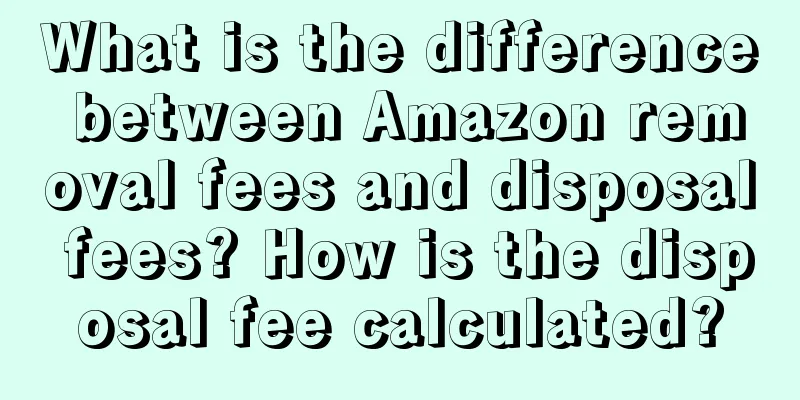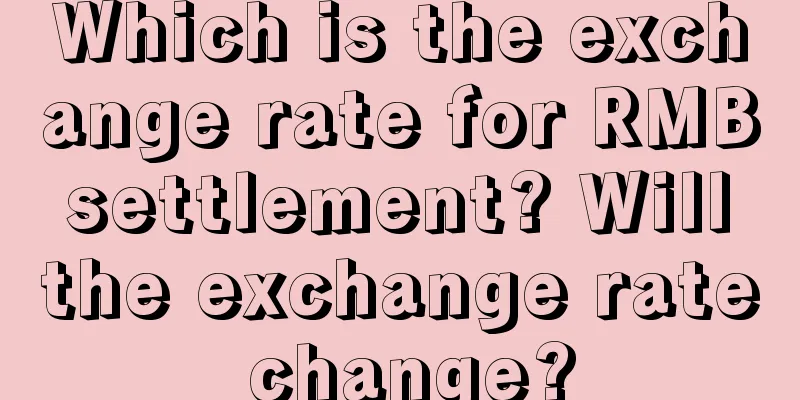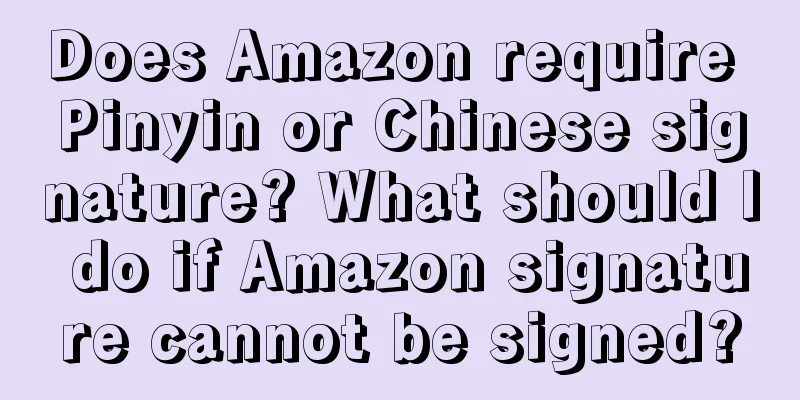Brand and price determine life and death

1. Straight to the point, pricing is the science that determines the life and death of a brand. Pricing is not simply cost + profit. If you set a price that only satisfies you, it will be difficult for consumers to pay. It takes certain skills to impress consumers with price. Only by setting a good price can you sell a good brand. 2. Most people in China have experience in online shopping and shopping in malls. In malls and online shopping platforms, we will find that discounted products are basically X99 yuan or X98 yuan, such as a coat for 399 yuan, a T-shirt for 29 yuan, and even fruits for 9.9 yuan accurate to one decimal place. Behind this pricing method is the support of psychology. In psychology, the human brain will naturally group prices. For example, 399 yuan will be classified into the price range of more than 300 yuan, while 29 yuan will be classified into the price range of more than 20 yuan. 399 and 400 yuan are only one yuan apart, but in the eyes of consumers, they may be the difference between two ranges. As long as you are a person, you will intuitively group them in this way. If you want to understand this mechanism, you can read Kahneman's "Thinking, Fast and Slow" in detail. 3. In marketing, the price will directly affect the final sales volume of the product, but the price is not the lower the better. The pricing also depends on the specific consumers, which category they are in, etc. How to fight a price war is an enduring topic in the competition between enterprises and competitors. Moreover, price war must be fought, but it needs to be fought skillfully. Apple also fights price wars, but its price war is fought skillfully. Anyone who does not fight price war skillfully will end up like "Luo Yonghao". When Luo Yonghao T1 was launched, he insisted on pricing his mobile phone at 3,000 yuan, and criticized that 1,999 yuan was a monkey trick. In the end, he had to face the cruel reality, reduce the price, and set the price according to the principles of psychology. 4. The meaning of pricing: Price is not simply cost + profit, but it is necessary to first carry out category positioning and product positioning of the product, and then set the price according to the different values generated by the category to which the product belongs. For example, a new beverage costs 6 yuan, and the company wants to make a profit of 4 yuan, so pricing it at 10 yuan seems to be a reasonable choice, but it is not the case from the consumer's point of view. This highlights the importance of positioning. When this beverage is positioned in a high price range, the manufacturer will gain more profits. For example, if the same beverage is placed on the shelf of a supermarket and compared with a bottle of cola that costs 3 yuan, then it is difficult for the price of 8 yuan to have an advantage; but if it is placed in a coffee shop, compared with a cup of coffee that costs 30 yuan, it may be priced at 15 yuan, which seems very cheap. This is why Yuanqi Forest must first make sugar-free beverages to succeed. Because it is a sugar-free beverage, it can be sold at 5 yuan per bottle at the terminal. If it is also a sugary soda, it is very difficult to sell it at 5 yuan per bottle. 5. The reason for the above situation is that consumers do not know how much a newly launched product is worth. The only way they think the price of this product is high or low is by comparing it with previous products. If a piece of fried chicken is sold at 5 yuan in a street shop, you will think it is expensive, but if it is sold in McDonald's, you will think it is so cheap. Therefore, when mature brand companies price new products, they must first position the product, or carry out category innovation, and then find products that match it, and then seize the consumer market through price advantages or other marketing activities in the same range. 6. The method to find an anchor product for yourself is: first, you need to find the category or product itself that can meet the needs of consumers; second, think about which competing products can meet these needs. Let’s take the beverage mentioned above as an example. If this beverage can meet the consumer’s needs of refreshing, then what products on the market have the same needs? We may drink tea to refresh ourselves, or choose coffee, or functional drinks such as Red Bull, all of which will become competitors for this new beverage. After finding the approximate range of competing products, the brand had a basic direction for pricing. Finally, after considering the portability and taste of the beverage, the brand priced the beverage at 8 yuan, and placed it next to the 12 yuan canned coffee on the shelf, so that consumers would try the newly launched beverage. This price was actually higher than the original expectation. After a period of sweetness for the new product, the price could be fine-tuned. Sales continued to grow steadily, and word of mouth and volume were also well promoted. Generally, brands increase prices every year. The reasons for the price increase include raw material and labor costs, but the more important reason is that consumers hope that the products they buy are valuable. 7. Pricing skills. When learning pricing skills, you must remember that consumers do not like your products to be really cheap. If your products are really cheap, they will not have the urge to consume. Consumers do not buy cheap products, but hope to get a bargain. Pricing skills include bait method, bundling method, free method and other techniques. 360 has made its success by relying on free strategies. 8. The bait method is actually a relatively common method. As the name suggests, the brand will first throw a bait to consumers, which is a product with unreasonable pricing, in order to stimulate consumers to buy other products that the brand promotes. Relatively speaking, the bait method is more suitable for selling services rather than physical products. There used to be an e-sports magazine in Japan that sold very well, but with the development of the Internet, people prefer to subscribe to e-magazines. However, in the view of the magazine, paper magazines can get more advertising fees, so they hope to promote the sales of paper magazines in some way. The price of a full-year subscription to a paper magazine is 2,700 yen, while the price of an e-magazine subscription is 1,500 yen. At this time, they made a decision to launch a 3,500 yen bound volume, and after subscription, they will launch a hardcover bound volume to consumers every six months. But in fact, for monthly magazines, the half-year bound volume is not very meaningful. Except for loyal fans who support it by subscribing to the e-magazine and the bound volume, most people will not subscribe to this product. However, the promotion of the hardcover bound volume has made more people see the texture and irreplaceability of paper magazines. At the same time, the price of monthly magazines is cheaper, and finally the sales of paper magazines increased by 15%. 9. Bundling, or bundled sales. The core of bundled sales is to reduce the sensitivity of single high-priced products and make consumers feel that they have bought more goods with less money through combination. Basically, all mobile phone packages are sold in bundles. Whether you are a user of China Mobile, China Unicom or China Telecom, you must be very familiar with packages like 99 yuan a month, which include 1,000 text messages, 1,000 minutes of domestic calls and 10G of data. Through this complex combination, operators reduce consumers' judgment of individual services. Consumers may not need long talk time or rarely send text messages, but after seeing such a package combination, they will only consider whether the price is acceptable, rather than whether they really need the service. 10. Free method. Many people may think that they have never encountered a merchant using this method, but I believe that everyone has enjoyed this service, that is, free shipping. The process of consumption is actually a process of selection. Choosing the right product, choosing a lower price, choosing an affordable combination, all of these are based on the fact that consumers have to pay some costs. When the product is free, will consumers still make a choice? They will definitely take it all. 11. To win the price war, the first way is to take the initiative. In the category and product positioning stage, find the difference between your products and your competitors' products, and avoid consumers from directly comparing products in the same category through differentiated pricing. This is reflected vividly in the sales of shampoo brands. You can see various types of shampoos on the market, such as oil-control, anti-dandruff, blackening, nourishing, etc., and different products have different positioning. And because there are so many functions, different brands can also find their own areas of expertise to make a name for themselves. For example, when it comes to anti-dandruff, you will think of Head & Shoulders. 12. The second method is to resolve direct conflicts. If a competitor declares war directly by lowering prices, we can also resolve the offensive through other means, such as 14-day no-reason refunds, package products that can be combined at will, etc. For example, if everyone is selling English courses, and your competitor's price is lower than yours, and if you continue to lower the price, the profit will be too low, then you can deal with it by modularizing the product. The original 5999 package course can be divided into 1999 oral training + 1999 reading comprehension + 1999 listening training, allowing consumers to choose the part they need to improve, which is easier for consumers to accept, and the total price does not decrease. 13. Pricing is a psychological game between brands and consumers. To do pricing well, it is not as simple as marking a price. The first thing to do is to innovate in the concept of category and product positioning, then anchor the price, set the price, conduct sales tests, and increase the price at the right time. Pricing cannot be arbitrary. Remember, it is a science. Author: Liu Yichun WeChat official account: "Liu Yichun's brand product innovation" |
<<: Five characteristics of data, three problems, and one kind of arrogance
>>: Douyin pictures and texts bring goods, it is very profitable
Recommend
A new MVP emerges in the 40 billion short drama market
As AI technology continues to deepen in the field ...
Is there any bonus for playing Douyin PK for five minutes? What is the maximum score you can get in PK?
As one of the most popular short video platforms i...
Xiaohongshu’s strategy to break the brand circle
How can brands break through the circle on Xiaohon...
Douyin has removed its paid knowledge products from its shelves. Is it starting to rectify the chaos of "cutting leeks"?
"Douyin announced that it would remove its ed...
Please answer 2024, the top ten trends in automotive marketing
In 2024, the Chinese automotive industry has under...
How to price products in Pinduoduo
In the world of e-commerce, product pricing is not...
What is the process of opening a cross-border e-commerce store? How to open a store?
There are actually quite a lot of merchants doing ...
What does an Alibaba International Station account manager do? What should operations do?
As we all know, Alibaba International Station has ...
A barbecue restaurant was opened for 300,000 yuan, and sold for 180,000 yuan in less than a month, but Zibo is not cold
This article starts from the development history o...
How do Internet newcomers choose careers, industries, and companies (Part 2)
Continuing from the previous article, in this arti...
What is the process of building a cross-border e-commerce platform? How to do it?
In the cross-border e-commerce industry, the model...
How to split orders on Shopee? How to ship goods?
Merchants who open stores on Shopee should pay att...
Marketing strategies of beverage brands
What do you think of when you mention Nongfu Sprin...
Rebirth: New opportunities for small and medium-sized businesses on Xiaohongshu
This article analyzes the marketing cases of Xiaoh...
The number of fans increased by more than 3 million in 5 days, and young people flocked to the live broadcast room of "Three Little Old Men"
After the September 10 Li Jiaqi incident, domestic...









